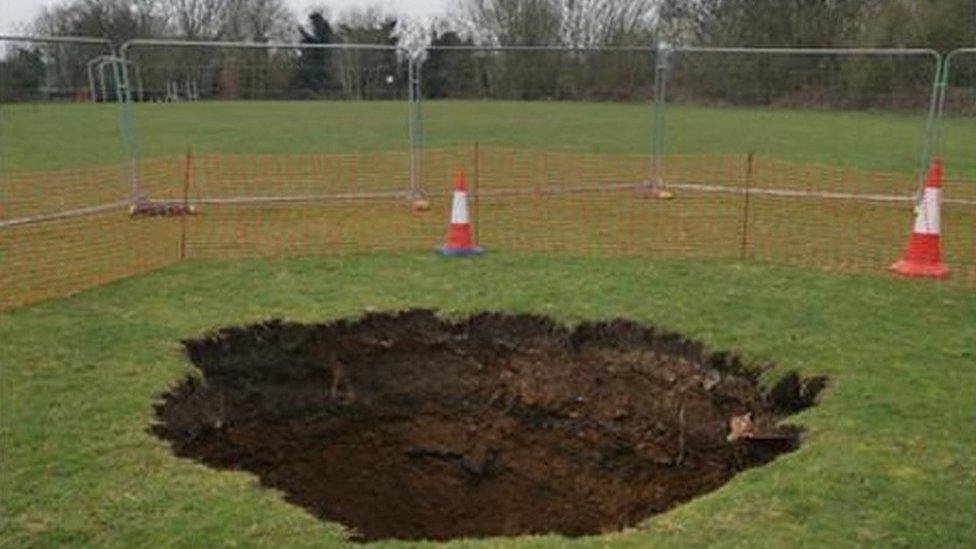Sinkholes: Why do they keep appearing in the ground?
- Published
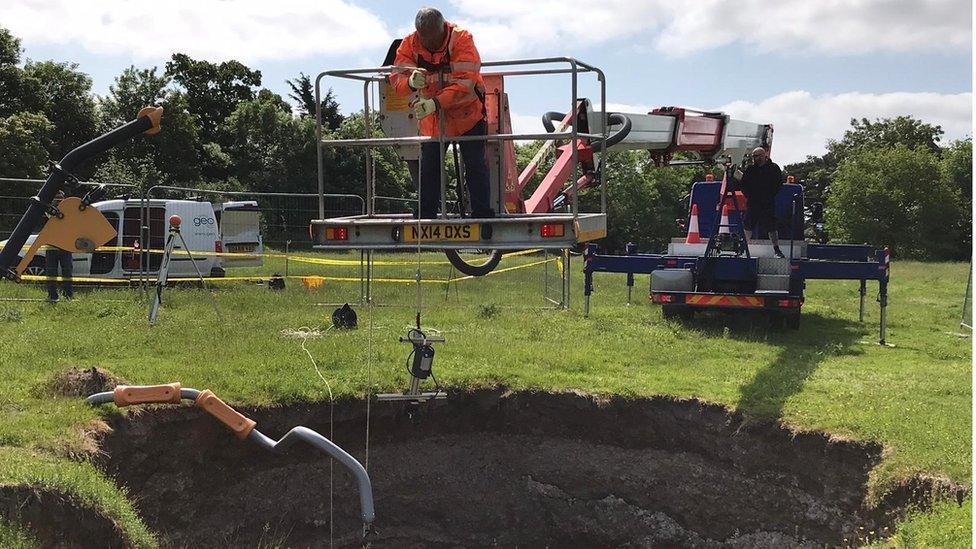
The sinkhole - actually a crown hole - in Wooburn Green, Buckinghamshire, is almost certainly connected to the area's brick-making past
A 35m (115ft) "sinkhole" that appeared in a children's play area in Buckinghamshire is one of many holes that have opened up in the area in the past few months and years. The BBC takes a look at what could be causing the issue.
What is a sinkhole?
Any large hole that opens up in the ground tends to be referred to as a sinkhole, but strictly speaking this catch-all term is inaccurate.
According to the British Geological Survey (BGS), a sinkhole is "a natural surface depression caused by dissolution of soluble rocks at depth".
The Chilterns, Hertfordshire and Bedfordshire sit on a layer of soluble chalk - hence the appearance of sinkholes and other types of hole.
As the underground chalk layer fragments, underground holes develop, often close to the surface beneath a thin cover of clay or sandy soil, geologist Dr Andrew Farrant explained.
Typically, these "buried sinkholes" are a few metres across and between 5m (16ft 5in) to 10m (32 ft 10in) deep.
What can cause a sinkhole to appear?

A sinkhole was probably to blame for this horse becoming stuck in 2018
While gradual dissolution happening underground can cause a sinkhole to form, several things can make the cavities appear.
Heavy rain or surface flooding can initiate their collapse, along with human triggers such as construction work, leaking drainage pipes, burst water mains and groundwater abstraction, according to the BGS.
A 2m (6ft 7in) deep hole in Beaconsfield, from which a horse was rescued in 2018, is believed to have been a sinkhole.
Much larger cave-like cavities can develop naturally in chalk and open up to the surface but are much rarer, according to Dr Farrant.
He cites an example of a "collapse sinkhole" from more than 75 years ago, when a 30ft (9.1m) tree, heavy with snow, sank vertically into the ground in Mickleham, Surrey, with its upper branches coming to a rest some 10ft (3m) from the surface.
What else causes the ground to open up?
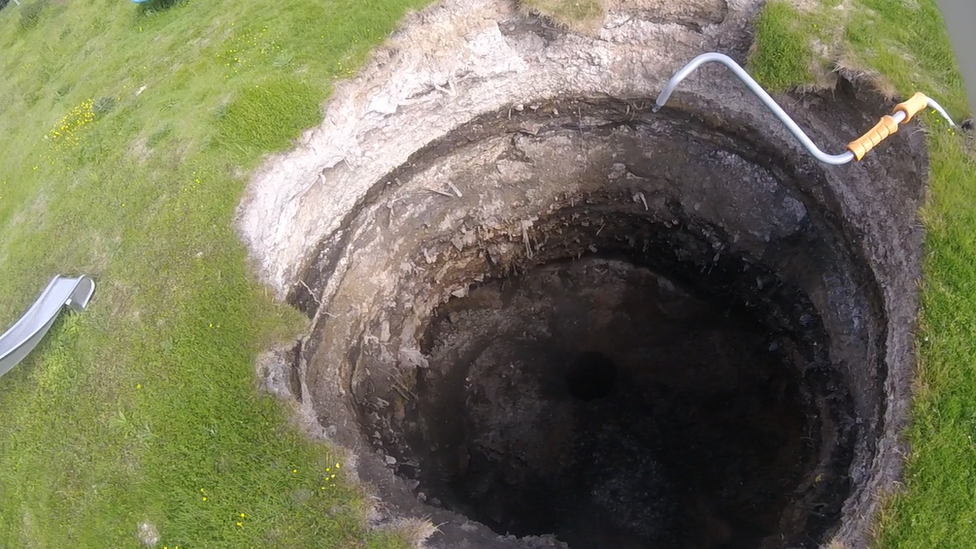
The hole at Sappers Field in Woodburn Green opened up directly under play equipment
Many holes are caused by our industrial past and are a reminder of our long heritage of mining rocks and minerals from deep underground.
Crown holes, unlike sinkholes, are caused by the collapse of artificial cavities. They are often caused by activities from hundreds of years ago, and reveal themselves after heavy rain saturates the ground.
The "sinkhole" (actually a crown hole) due to be filled in at a children's playground at Sappers Field in Wooburn Green, Buckinghamshire, and a hole that appeared close by in 2020 (another crown hole) were most likely above an old chalk mine or collapsed shaft, according to Dr Farrant.
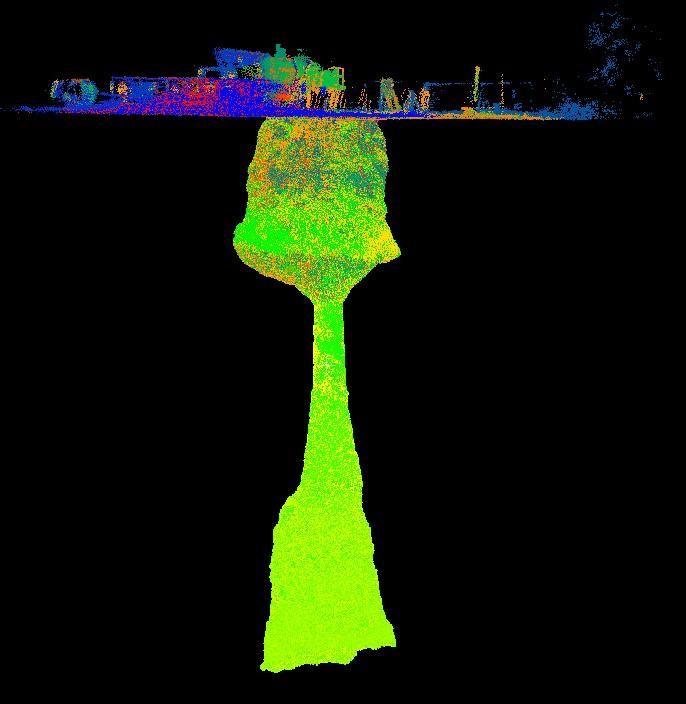
A laser scan survey of Sappers Field showed the hole had a "bell pit" formation
Sappers Field in Wooburn Green was a former brickworks, where clay was dug for making bricks and tile, from the mid-1800s to at least 1925."During the brick-making process, chalk was often added to the clay to improve the quality of the bricks," explained Dr Farrant.
"It was often easiest for the owners to sink a shaft through the clay into the underlying chalk group strata and extract it from underground galleries rather than quarry it elsewhere and cart it up the hill.
"At the Sappers Field site, the chalk is not far below the base of the clay pit.
"When the brickworks closed, these shafts were capped and forgotten about.
"Sometimes after heavy rain or during disturbance by construction, the capping material can fail, revealing the shaft.
"In other cases, it may be the galleries that collapse, which propagates up to the surface creating surface subsidence, also known as a crown hole."
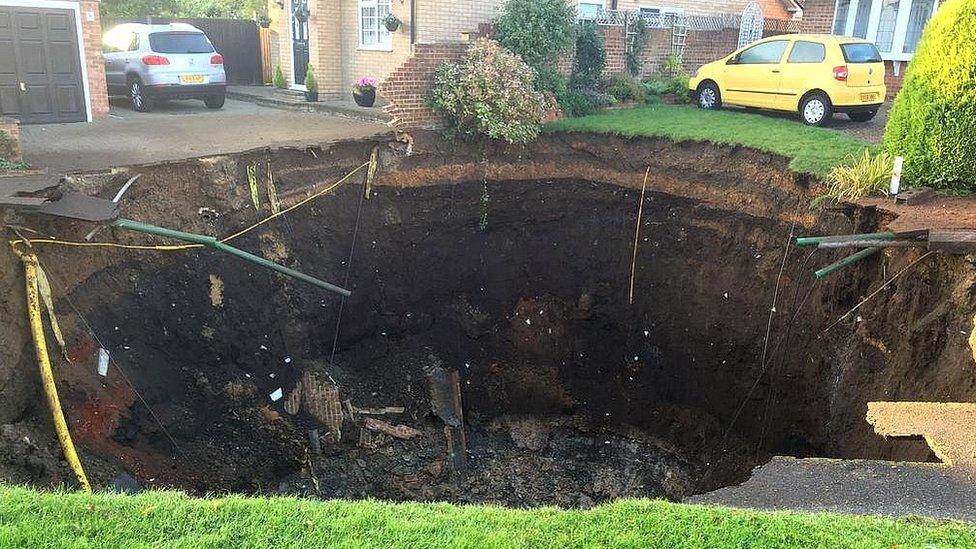
A crown hole appeared overnight in Fontmell Close, St Albans, in 2015
Thousands of unrecorded chalk mines were dug in medieval times in the North Downs and the Chilterns to extract chalk for liming fields to improve them for farming, and the mines or shafts sometimes collapse.
Other crown holes include the huge crater that opened up on a cul-de-sac in St Albans in 2015, on the site of a former chalk mine, and a hole that swallowed a car in a driveway in High Wycombe the previous year.
What else causes these cavities to appear?
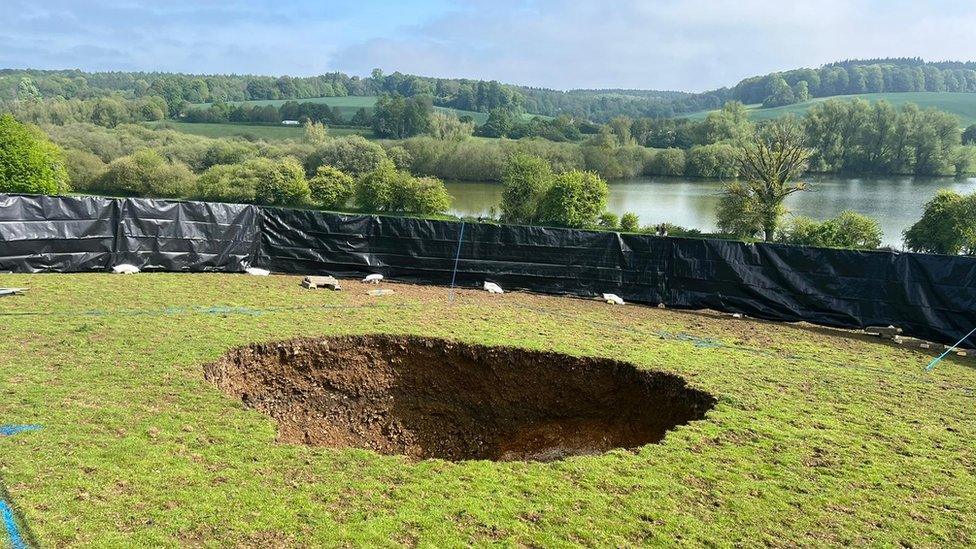
A hole opened up above the HS2 Chiltern Tunnel near Little Missenden last year
Holes have opened up when tunnelling has caused the overlying rock to collapse, such as during the digging of the HS2 Chiltern Tunnel.
Dr Farrant believes tunnellers possibly disturbed the sediment in a buried sinkhole, thus causing a cavity to open up near Hyde Heath in November.
A crater which appeared above the same tunnel near Little Missenden last year happened when the tunnellers encountered a zone of weak rock associated with a fault zone, Dr Farrant said.

Follow East of England news on Facebook, external, Instagram, external and X, external. Got a story? Email eastofenglandnews@bbc.co.uk , externalor WhatsApp 0800 169 1830
Related topics
- Published1 March 2024
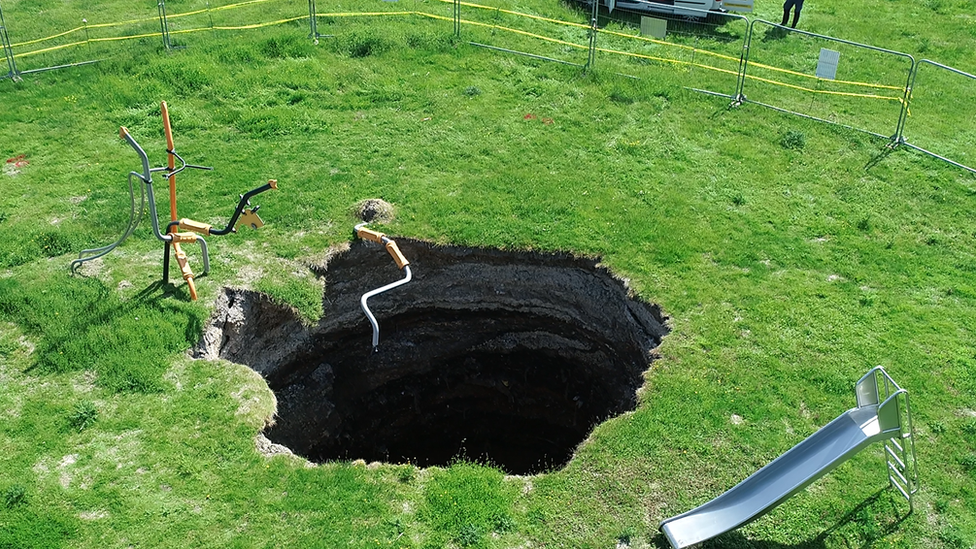
- Published2 February 2024
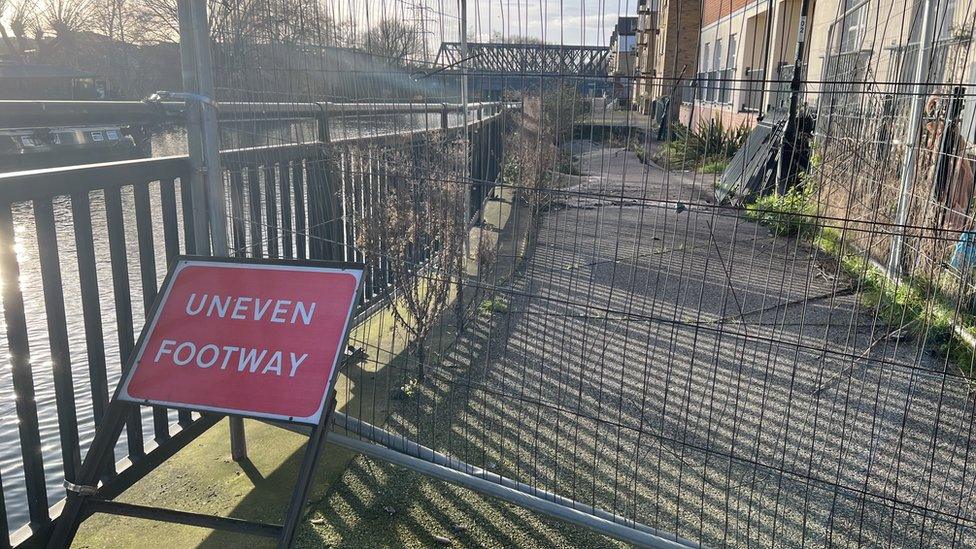
- Published14 May 2023

- Published4 March 2020
